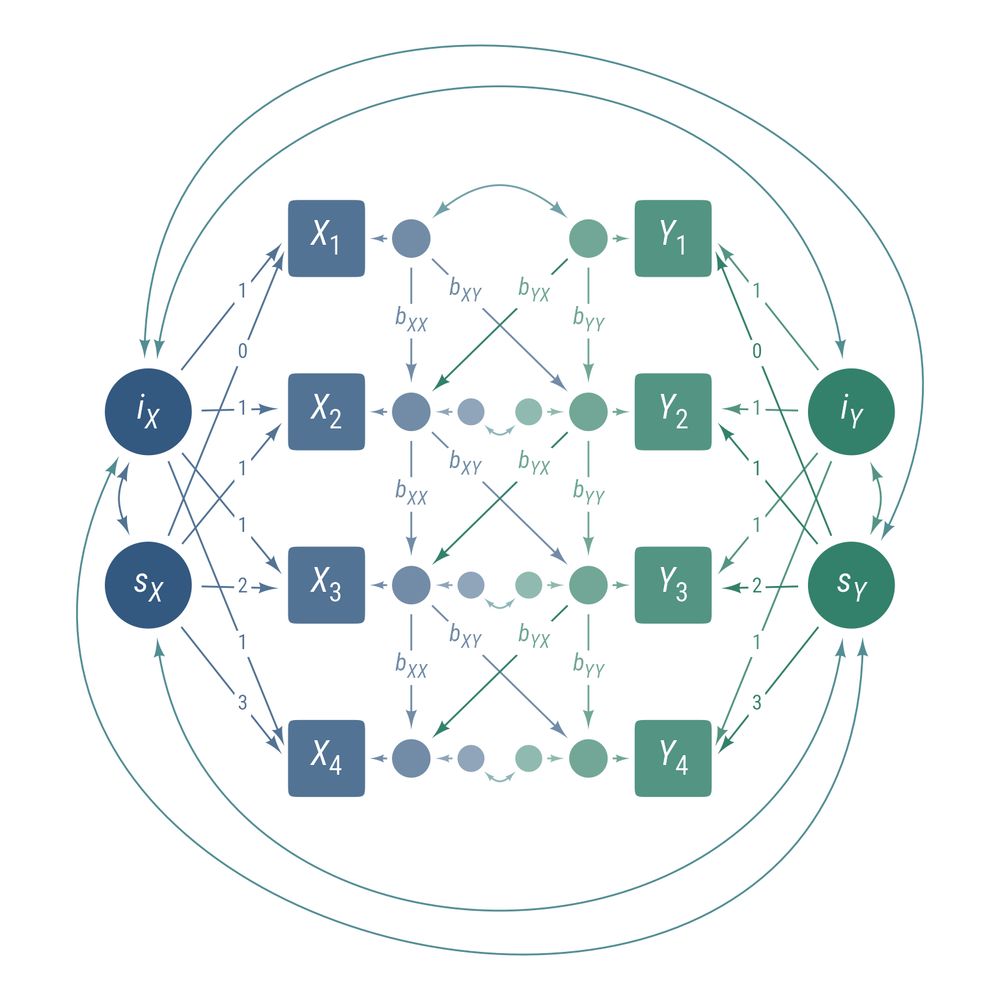no…
29.09.2025 22:51 — 👍 1 🔁 0 💬 0 📌 0Brendan Schuetze
@schu.etze.co
Cognition, Learning Science, Quant Methods Assistant Professor, Educational Psychology at a “large university in the mountain west” Views are my own
@schu.etze.co
Cognition, Learning Science, Quant Methods Assistant Professor, Educational Psychology at a “large university in the mountain west” Views are my own
no…
29.09.2025 22:51 — 👍 1 🔁 0 💬 0 📌 0I wouldn't mind if the last sentence of your tweet above was appended to all journal articles in education and psychology 😄
29.09.2025 18:14 — 👍 2 🔁 0 💬 1 📌 0
A Systematic Review in BMC Psychiatry finds that indoor rock climbing, particularly bouldering (combined with mindfulness exercises), can be an effective, and safe, adjunctive intervention for adults with moderate depression. Further studies are warranted.
#MedSky #PsychSciSky

This is a theoretical predicted outcome of computational modeling I recently published -- essentially one can conceptualize underconfidence in metacognitive monitoring as shifting one's learning goal upwards, increasing performance if students are highly motivated
link.springer.com/article/10.1...

PsyArXiv's amazing team of 100+ moderators has now approved all preprints that meet the requirements outlined in the updated PsyArXiv policies (is.gd/paxpolicy). Thank you to everyone who volunteered, this was a true community effort! #PsychSciSky
11.09.2025 18:29 — 👍 88 🔁 20 💬 2 📌 3
Image of labubu doll labeled labubu next to image of spiky labubu doll labeled lakiki
::slowly stands while clapping::
10.09.2025 23:07 — 👍 1015 🔁 257 💬 6 📌 11
BREAKING: Multiple witnesses say right wing commentator Charlie Kirk was shot while speaking at Utah Valley University.
10.09.2025 18:50 — 👍 29 🔁 14 💬 9 📌 5in psychology, I feel like it’s that everything has to be modeled as a latent variable
05.09.2025 04:31 — 👍 0 🔁 0 💬 0 📌 0too late lmer goes brrrrrr
03.09.2025 06:57 — 👍 11 🔁 0 💬 1 📌 1I missed the last three words of this tweet when I first read it, and I thought JB Pritzker was turning into General Lee for a second
02.09.2025 23:25 — 👍 0 🔁 0 💬 0 📌 0Viel Spaß!
as they might say ;)
Thanks to our amazing moderators working on this 24/7, we are now 50% done with the PsyArXiv backlog! 🎉
For all our PsyArXiv users, thank you for your patience. If you would like to help us, here are some tips to help your next preprint sail through moderation:
#PsychSciSky
Possibly the most influential psychology study of the last decade?
27.08.2025 21:09 — 👍 4 🔁 0 💬 0 📌 0
Models as Prediction Machines: How to Convert Confusing Coefficients into Clear Quantities Abstract Psychological researchers usually make sense of regression models by interpreting coefficient estimates directly. This works well enough for simple linear models, but is more challenging for more complex models with, for example, categorical variables, interactions, non-linearities, and hierarchical structures. Here, we introduce an alternative approach to making sense of statistical models. The central idea is to abstract away from the mechanics of estimation, and to treat models as “counterfactual prediction machines,” which are subsequently queried to estimate quantities and conduct tests that matter substantively. This workflow is model-agnostic; it can be applied in a consistent fashion to draw causal or descriptive inference from a wide range of models. We illustrate how to implement this workflow with the marginaleffects package, which supports over 100 different classes of models in R and Python, and present two worked examples. These examples show how the workflow can be applied across designs (e.g., observational study, randomized experiment) to answer different research questions (e.g., associations, causal effects, effect heterogeneity) while facing various challenges (e.g., controlling for confounders in a flexible manner, modelling ordinal outcomes, and interpreting non-linear models).

Figure illustrating model predictions. On the X-axis the predictor, annual gross income in Euro. On the Y-axis the outcome, predicted life satisfaction. A solid line marks the curve of predictions on which individual data points are marked as model-implied outcomes at incomes of interest. Comparing two such predictions gives us a comparison. We can also fit a tangent to the line of predictions, which illustrates the slope at any given point of the curve.

A figure illustrating various ways to include age as a predictor in a model. On the x-axis age (predictor), on the y-axis the outcome (model-implied importance of friends, including confidence intervals). Illustrated are 1. age as a categorical predictor, resultings in the predictions bouncing around a lot with wide confidence intervals 2. age as a linear predictor, which forces a straight line through the data points that has a very tight confidence band and 3. age splines, which lies somewhere in between as it smoothly follows the data but has more uncertainty than the straight line.
Ever stared at a table of regression coefficients & wondered what you're doing with your life?
Very excited to share this gentle introduction to another way of making sense of statistical models (w @vincentab.bsky.social)
Preprint: doi.org/10.31234/osf...
Website: j-rohrer.github.io/marginal-psy...

An arrow with a LaTeX equation

Trigonometric functions and a unit circle

A bivariate change model with structured residuals

A hierarchical model of cognitive abilities
Now on CRAN, ggdiagram is a #ggplot2 extension that draws diagrams programmatically in #Rstats. Allows for precise control in how objects, labels, and equations are placed in relation to each other.
wjschne.github.io/ggdiagram/ar...
Greenhouse-geisser?
What is this a field experiment at Yellowstone?
Mauchly's test of sphericity?
What exactly are we testing and why isn't it just called equal variances?
Whenever I read a paper reporting repeated measures ANOVAs, it always sounds like arcane nonsense.
Pillai’s Trace?
That’s not a test statistic, that’s a forgotten railway line.

norman rockwell’s famous “freedom of speech” oil painting

an old jacket in a glass case, which belonged to the model in the painting
guys I’m off this week … went to the norman rockwell museum. found the meme in real life — and his jacket
18.08.2025 16:19 — 👍 2801 🔁 385 💬 37 📌 63cool cool cool 🫠
18.08.2025 17:57 — 👍 0 🔁 0 💬 1 📌 0Y’all we’ve all met reviewer 2, but I fear recent experience has shown me reviewer 5 is much worse
13.08.2025 02:48 — 👍 6 🔁 0 💬 2 📌 0
White background with the APA logo to the left. On top of the flyer are two researchers, below is text about their research presentation at the conference
How can we use graduate education in educational psychology to respond to calls for integrating race, culture, and systemic influences into research?
Join
@allisonzengilowski.bsky.social and I bright and early tomorrow to talk about it
Seeing this in my uber to the airport is devastating
08.08.2025 18:32 — 👍 0 🔁 0 💬 1 📌 0Come for my talk, stay for @drteyar.bsky.social or vice versa — I’m not your boss :)
08.08.2025 18:31 — 👍 2 🔁 0 💬 0 📌 0If you’re at APA 2025, I’d love to see you in the audience at my Pintrich award address at 1pm tomorrow!
The topic is formalizing theories in SRL and how this explains seemingly odd yet replicable phenomena in education research 🤓
Location: Colorado Convention Center, Street Level, Room 201
Further question is the metric that spotify DJ reports:
P(M5₍ᵤ₎ > M5₍g₎)
or
P(M5₍ᵤ₎ > M5₍g₎ | user ∈ M5ₗᵢₛₜₑₙₑᵣₛ)?
And if it's the latter what qualifies someone as a listener
No, I haven't seen the news today, but the Spotify DJ told me I was in the top 2% of Maroon 5 listeners last week, so my day was already in shambles.
02.08.2025 02:19 — 👍 1 🔁 0 💬 1 📌 0Psychologists & related fields: what is a big methods question that you believe remains somewhat unanswered & that you'd love to see adressed? There may be an opportunity for a large-scale meta-science project with many teams trying to figure out a question.
Any thoughts welcome! #psychscisky

oh!
18.07.2025 00:27 — 👍 1 🔁 0 💬 0 📌 0